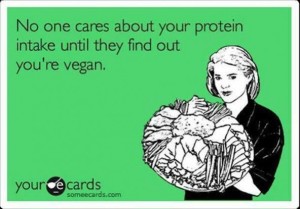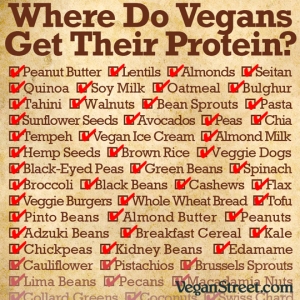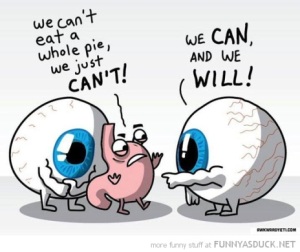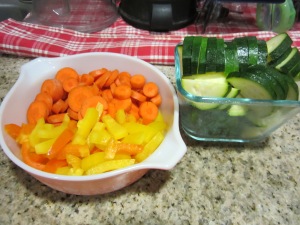How to be vegetarian (or sometimes eat like one)
Without being hungry, tired, or malnourished
I grew up in an omnivorous household, and I was the only person in that household who opted to forgo meat as a matter of choice.
Family holiday dinners can still be a little awkward. At this point, my mom understands that I do need something to substitute the meat – it doesn’t work to just have the side dishes. However, she doesn’t have the energy to make a non-meat high protein dish that I will be the only one to eat. So I have to bring my own.
I first went vegetarian in high school. Honestly, I started because one of my friends was doing it. Feel free to laugh about my initial motivation.
Since high school, I have been everywhere on the vegetarian spectrum, from vegan, to standard lacto-ovo vegetarian, to pescatarian (vegetarian + eat seafood/fish). Currently I consider myself a “selective pescatarian” meaning that I do sometimes eat fish but I am selective about it, and most of the time it is far easier to tell someone that I vegetarian than to explain why don’t want to eat whatever fish they have. I have learned to be selective about what non-meat protein sources I choose. I realized recently that I tend to feel better if I only consumed a small amount of dairy each day; in particular I do better with cultured dairy products. I have also recently realized that fake meat products made with mostly wheat protein (gluten) tend to have undesirable effects on my digestive system. Not a major problem, but it is something I’d rather avoid if I can.
A 2008 phone survey of Americans indicated that about 3% of us are vegetarian. Only 0.5% of Americans are vegan (which is a subset of vegetarians that eat no animal products, meaning no eggs/dairy). So I realize that many of you reading this newsletter are not vegetarian, and may have no plans to be.
However, there have been many times that I spoke to members about their diets, and they tell me that sometimes they just don’t feel like eating meat at a given meal, and just want to know to put together a meat-free meal without being so hungry afterward. Other members of the Fitness Center tell me that they are vegetarian for religious or cultural reasons, or may be vegetarian for certain time periods. Many of these people come to me with their struggles of being vegetarian while keeping their hunger and body fat in check.
Currently, the US government is considering recommending a plant-based diet as part of the 2015 Dietary Guidelines for Americans. The Guidelines won’t be finalized until later this year, but it shows that the idea of eating more plants is gaining traction. I am not here to convert you, but just to show you how to intelligently consider your options.
It’s Tough Being Green
The internet loves to ridicule vegetarians and vegans. In many areas of the country, it is hard to find vegetarian restaurants, or even individual menu items that are meat-free. It’s a lonely road sometimes.
Another difficult aspect of vegetarian life is the fact that everyone in your life seems to become very concerned about your nutrition. Let me tell you, it is just as easy to be a malnourished meat-eater as non-meat-eater. However, American culture is so based on meat-eating that public knowledge of how to build a healthy meat-free diet is sorely lacking.
Vegetarians get sick of people asking them “where do you get your protein?” However, there are still plenty of newbie (and not-so-new) vegetarians that are mismanaging their diets that people still feel the need to ask. Stereotypes of weak frail vegetarians eating plain rice abound, and I don’t want you to be just another stereotype.
So here are my Top 3 Big Ideas for putting together a vegetarian meal or diet.
*Be aware of protein sources (and also how much fat and/or carbohydrate comes along with those grams of protein)*
Yes, protein matters. Protein is an essential building block for your muscle and connective tissue. Protein also contributes significantly to your satiety (feeling full) from a meal. Protein needs vary depending on your size and activity level. As a general rule, try to aim for somewhere between 0.7 – 1.0 grams of protein per pound of body weight. For someone who is 120lb, that would be somewhere between 84 and 120 grams of protein per day.
Many foods contain protein, and many of the foods on this list (below) have a lot of carbohydrate and/or fat that come along with that protein. So if you are trying to watch your weight, you may find that you need some foods that are more concentrated in protein without all the other calories from carbs or fat. Chlorella and spirulina (microscopic algae common in “greens” powders) are both almost 60% protein by weight. They are a good quality protein, but most people who consume them only have a small amount. If you want a great source of protein plus vitamins and minerals, try a big scoop of chlorella or spirulina in almond or coconut milk. I suggest cocoa powder and stevia for taste.
*Vary your protein sources and focus on whole food (don’t over-rely on just soy products, or a certain brand of fake meat)*
Depending on where you get your news from, you may have seen some negative press about soy and the phytoestrogens in it making you fat. The reason soy became so popular in the US is that we looked to Eastern cultures where soy is popular and has been eaten for centuries, and they enjoy good health and longevity. We wanted that health and longevity, so we started using more and more soy. It has gotten to a point where soy derivatives (like texturized vegetable protein) are in all kinds of food you wouldn’t expect. We took a healthy food, and then took it out of context with heavy processing. If you choose to eat soy, it is best to stick with traditional, minimally processed forms – edamame, miso, natto, and tofu. The lesson here is to stick with whole foods as much as possible and limit processed foods. Check out ingredient lists, and if you aren’t sure what something is – find out!
Many of the most popular meat substitutes are made with proteins that are common allergens, such as wheat and soy. While veggie “meats” have been getting a lot better in the past 20 years, soy and wheat proteins are still the most common but you may find that you need to avoid or limit them. Other protein sources, such as brown rice, pea, and even mushroom, are becoming more common and give you a variety of options.
*Be aware of key nutrients that are frequently lacking in vegetarian/vegan diets*
Vegetarian diets are very healthy when planned correctly. The problem is that they are often not planned correctly. Vegetarian and vegan diets commonly lack sufficient protein, iron, zinc, calcium, vitamin B12, vitamin D, and vitamin A (or carotenes, precursor to vitamin A). Most of these are well taken care of when the diet includes a variety of nuts, seeds, legumes (beans), dark green and orange vegetables. However, many vegetables and legumes also contain factors that inhibit the absorption of other nutrients. Supplementation for vitamin D and B12 may be needed – always ask your doctor to get a blood test. This will help ensure you are supplementing the right nutrients for you.



